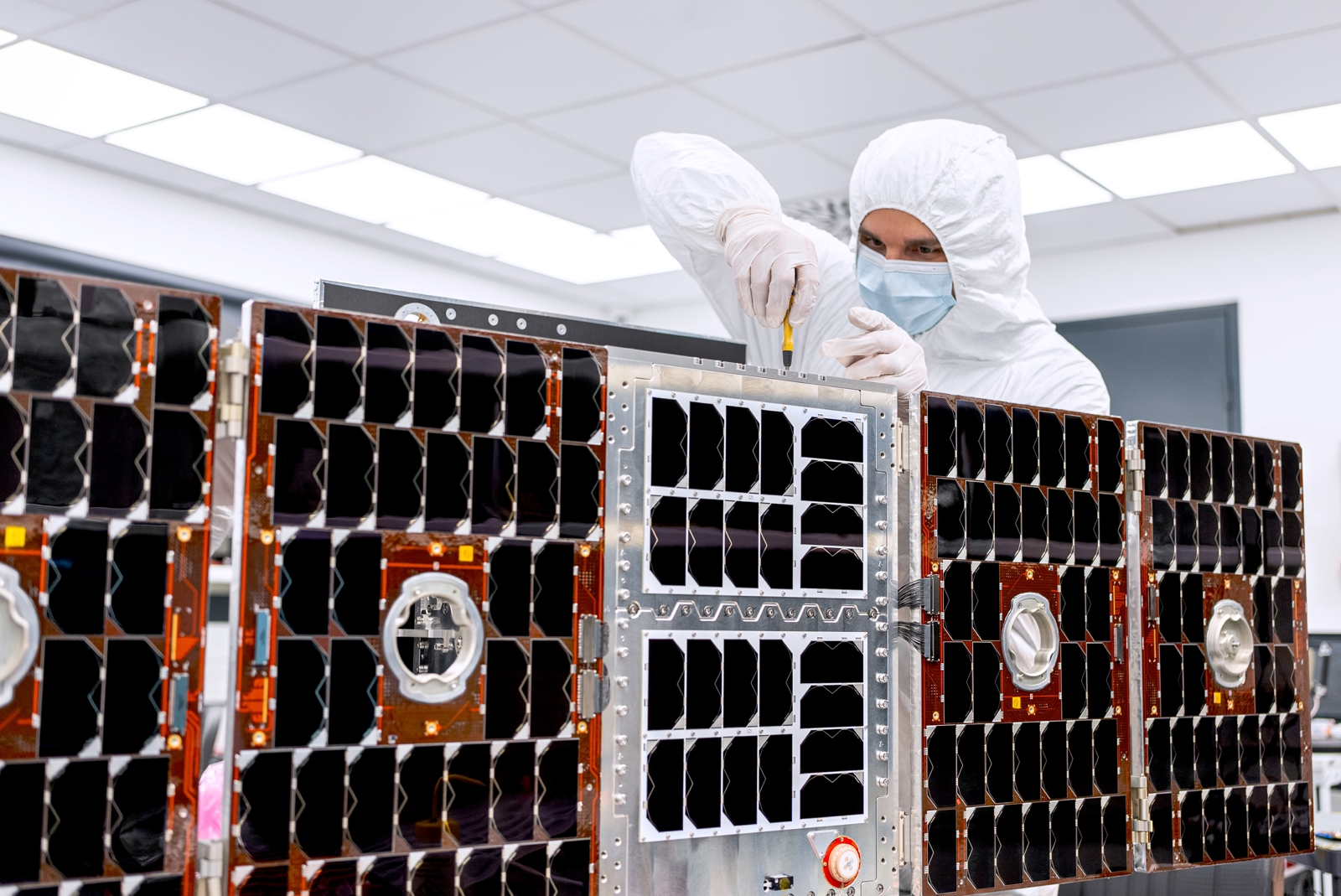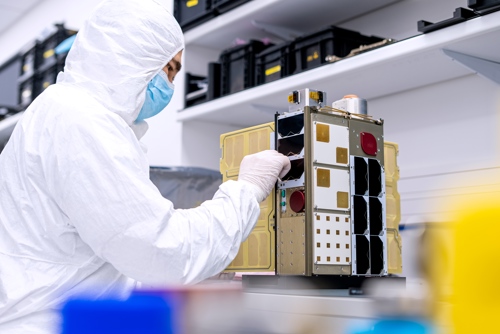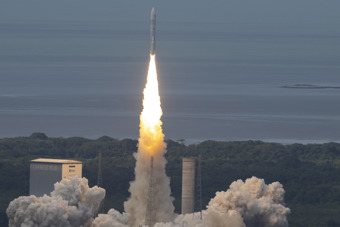
Space Innovation Enables Responsiveness, Resilience and Availability
Innovations in space-based systems are enhancing military abilities to anticipate threats and plan responses with greater speed, effectiveness and precision, writes Christina Aas, Technical Director, SmallSat Systems, Kongsberg Defence & Aerospace.
-
Photo:KONGSBERG / Nano Avionics
Space assets and capabilities are increasingly important to support international and national security and prosperity. This development has accelerated in recent years, after the US established its Space Command in the early 1980 and the EU established the European Defence Agency (EDA) 20 years later. Since 2019, a wave of establishments occurred: NATO’s Space Policy and Space Centre, US Space Force and UK, France, Italy, Denmark, Germany, Spain, Canada Space Commands.
New Space – a revolution in affordability and access
The development reflects the revolution in ‘New Space’, in which a broad range of commercial players entered the industry, driven forward by the miniaturization of electronics and the CubeSat revolution that made small satellites (<500 kg) increasingly capable.
In parallel, the emergence of space launch providers such as Space X made space activities more affordable and more accessible than ever before.
The innovations are also changing the game for the traditional space users – defence and security operations.
Space-based systems using microsatellites can enhance military abilities to anticipate threats and plan responses with greater speed, effectiveness and precision.
Norway’s geographical location entails a greater need for space-based services to provide monitoring and surveillance, as well as communication.
A civilian-military collaboration has been set up to ensure a cost-efficient build-up of satellite-based services. small satellites (<500 kg) have become increasingly capable.
However, to use these smaller satellites for critical services, they need to offer high reliability and availability.
KONGSBERG, an experienced systems provider, enhanced its capabilities by acquiring SmallSat provider Kongsberg NanoAvionics in 2022.
This acquisition enables us to better understand user information needs and determine the most suitable sensor suite and platform.
We tailor mission concepts to meet operational requirements and latency needs, while ensuring secure management of the entire process, including launch and operations.
From Legacy Space to New Space 3.0
KONGSBERG’s heritage from Legacy Space means we have a strong background in developing long-lifetime, high-reliability and availability satellite systems. We are supporting missions to Jupiter and Mars with critical components. Now we observe that the typical legacy space domain is moving towards the New Space domain in terms of a need for providing continuously more cost-efficient solutions, translating to the accepted use of more Commercial Off-the-Shelf (COTS) components.
Players are relieving some of the reliability, redundancy and verification requirements to get a faster-time-to-market solution to answer commercial needs. Typically, legacy space meant building a unique configuration and design for a one-off project related to a particular set of user needs; however, today we see a shift in the market towards more standardization of platforms and payloads (shifting the configurability to in-orbit instead) to enable shorter lead times and affordable projects. 
Similarly, in New Space, we observe in dialogue with all our customers several trends moving New Space closer to Legacy Space. We are past the years of only demonstrating concepts and New Space is today offering solutions for critical societal services and defence applications. This entails we need to improve time in orbit. We need a responsive industry capable of delivering on-demand and rapidly evolving its systems to meet constant upgrades in demands for more data, lower latency, higher resolution, greater coverage, etc. Customers need to trust that the platforms they buy will serve their purpose for 5+ years in orbit without failures. They demand higher reliability systems for less cost. Our answer to this trend is New Space 3.0.
With New Space 3.0, we are setting a new performance standard for small satellites, looking beyond launch success and evolving tech capabilities to address mission longevity, availability and reliability. Kongsberg NanoAvionics is very proud of our 100 percent success rate in achieving contact with all our satellites after launch, with zero dead-on arrivals. We are furthermore also proud of our 92% mission full-lifetime success rate (with an industry average of about 73 percent).

Christina Aas is the Technology Director for SmallSat Systems at Kongsberg Defence & Aerospace, where she leads a team developing the next generation of small satellites to meet governmental and societal needs. Christina holds a bachelor’s degree in physics and a master’s in aerospace engineering.With new space innovations, we are setting a new performance standard for small satellites, looking beyond launch success and evolving tech capabilities to address mission longevity, availability and reliability.
Several steps have been taken to bring us into the New Space 3.0 standard:
- enhanced and prolonged radiation testing of all subsystems
- increased requirements for reliability asked of suppliers
- standardization of satellite buses
When implementing these steps, one achieves a stronger relationship with the supply chain, leading to shorter lead times and reduced costs in non-recurring engineering hours.
Rapid satellite deployment for critical applications
The geopolitical situation of today has resulted in the need for a responsive space industry with the ability to rapidly deliver reliable systems serving demanding applications. Kongsberg Defence & Aerospace is part of a European Defence Fund project called REACTS, where the goal is to enable the replacement of satellites in orbit within 72 hours. This level of ambition calls for a space industry capable of offering pre-qualified satellite buses for fast payload integration, modular designs, standardised architectures, plug-and-play interfaces and constellation-optimized production lines, enabling high-volume batches and a redundant supply chain.
With responsive space as a baseline, space-based missile early warning and persistent ISR services can be brought forward, as well as search-and-rescue and critical environmental monitoring services to ensure a sustainable and secure planet for our next generation.


